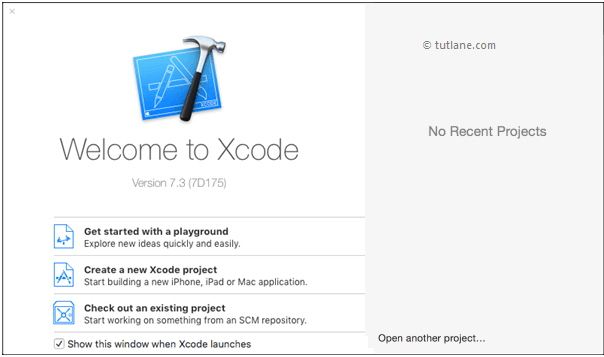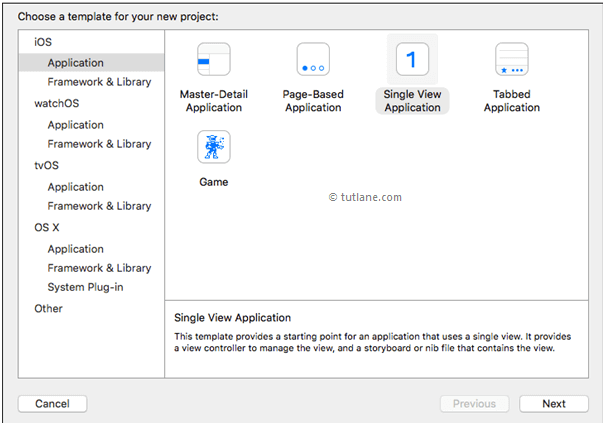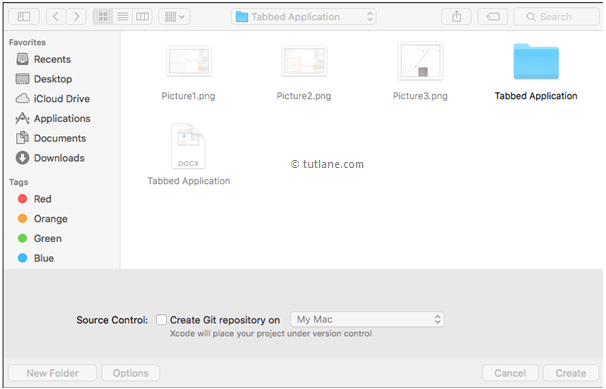iOS In-App Purchase
In iOS In-App Purchase is a storekit framework which is used to embed store inside of our app. Generally, the in-app purchase feature in iOS is used to collect the payments from users for the additional features and content.
Suppose we have iOS swift application and allowing users to access only limited features for free in case if they want to access all the features and content in app they should pay for it. By using in-app purchase we can collect the payments from users to enable full features and content of our app.
Another example to use in-app purchase is we created one iOS app and allowing users to access all the content and features of an app for free but we are displaying advertisements in our app. In case if users are not interested to see advertisement then they can pay amount to enable remove ads feature in our application. In our iOS app by using in-app purchase we can collect all these payments to enable addition features like removing ads from app, etc.
Now we will see how to implement iOS in-app purchase option in our swift applications with example.
Create iOS Transitions App in Swift
To create new project in iOS open Xcode from /Applications folder directory. Once we open Xcode the welcome window will open like as shown below. In welcome window click on the second option “Create a new Xcode Project” or choose File à New à Project.

After selecting “Create a new Xcode project” a new window will open in that we need to choose template.
The new Xcode window will contain several built-in app templates to implement common type of iOS apps like page based apps, tab-based apps, games, table-view apps, etc. These templates are having pre-configured interface and source code files.
For this iOS In-App Purchase example, we will use most basic template “Single View Application”. To select this one, Go to the iOS section in left side à select Application à In main area of dialog select “Single View Application” and then click on next button like as shown below.

After click Next we will get window like as shown below, in this we need to mention project name and other details for our application.
Product Name: “In App Purchase”
The name whatever we enter in Product Name section will be used for the project and app.
Organization Name: “Tutlane”
You can enter the name of your organization or your own name or you can leave it as blank.
Organization Identifier: “com.developersociety”
Enter your organization identifier in case if you don't have any organization identifier enter com.example.
Bundle Identifier: This value will generate automatically based on the values we entered in Product Name and Organization Identifier.
Language: “Swift”
Select language type as “Swift” because we are going to develop applications using swift.
Devices: “Universal”
Choose Devices options as Universal it means that one application is for all apple devices in case if you have any specific requirement to run app only for iPad then you can choose the iPad option to make your application restricted to run only on iPad devices.
Use Core Data: Unselected
This option is used for database operations. In case if you have any database related operations in your application select this option otherwise unselect the option.
Include Unit Tests: Unselected
In case if you need unit tests for your application then select this option otherwise unselect it.
Include UI Tests: Unselected
In case if you need UI tests for your application then select this option otherwise unselect it.
Once you finished entering all the options then click on Next button like as shown below.

Once we click on Next button new dialog will open in that we need to select the location to save our project. Once you select the location to save project then click on Create button like as shown below

After click on Create button the Xcode will create and open a new project. In our project Main.storyboard and ViewController.swift are the main files which we used to design app user interface and to maintain source code.
Main.storyboard - Its visual interface editor and we will use this file to design our app user interface
ViewController.swift - It contains source code of our application and we use this file to write any code related to our app.
Now in project select Main.storyboard file the Xcode will open visual interface editor like as shown below.

Now select ViewController.Swift file in your project that view will be like as shown below.

Add iOS UI Controls to View in Swift
Now we will add controls to our application for that open Object Library. The Object Library will appear at the bottom of Xcode in right side. In case if you don't find Object library, click on the button which is at the third position from the left in the library selector bar like as shown below. (Alternatively you can choose View à Utilities à Show Object Library.)

As we discussed our user interface will be in Main.storyboard file so open Main.storyboard file. Now in Object library search for Label in Filter field then drag and drop Label into Main.storyboard ViewController like as shown below same way add another label and 3 button controls in our Main.storyboard file.

Connect iOS UI Controls to Code in Swift
Now we will make connection between controls and ViewController.swift code for that click on assistant button (overlap circle) in Xcode toolbar right side corner like as shown below

To map the controls, press Ctrl button in keyboard and drag the labels and buttons from view controller and drop into ViewController.swift file like as shown below.

Once we done all the settings we need to write custom code to enable few features for users based on their purchase using in-app purchase for that we need to write code in ViewController.swift file like as shown below.
import UIKit
import StoreKit
class ViewController: UIViewController, SKProductsRequestDelegate, SKPaymentTransactionObserver
{
@IBOutlet var Ad: UILabel!
@IBOutlet var CAmount: UILabel!
@IBOutlet var RemoveAd: UIButton!
@IBOutlet var AddCoin: UIButton!
var coins = 50
overridefunc viewDidLoad() {
super.viewDidLoad()
RemoveAd.enabled = false
AddCoin.enabled = false
if(SKPaymentQueue.canMakePayments()) {
print("IAP is enable, loading")
let productID:NSSet = NSSet(objects: "seemu.iap.addcoins", "seemu.iap.removeads")
let request: SKProductsRequest = SKProductsRequest(productIdentifiers: productID as! Set<String>)
request.delegate = self
request.start()
} else {
print("please enable IAPS")
}
}
@IBAction func btnRemoveAds(sender: UIButton) {
for product in list {
let prodID = product.productIdentifier
if(prodID == "seemu.iap.removeads") {
p = product
buyProduct()
break;
}
}
}
@IBAction func btnAddCoins(sender: UIButton) {
for product in list {
let prodID = product.productIdentifier
if(prodID == "seemu.iap.addcoins") {
p = product
buyProduct()
break;
}
}
}
func removeAds() {
Ad.removeFromSuperview()
}
func addCoins() {
coins = coins + 50
CAmount.text = "\(coins)"
}
override func didReceiveMemoryWarning() {
super.didReceiveMemoryWarning()
// Dispose of any resources that can be recreated.
}
@IBAction func RestorePurchases(sender: UIButton) {
SKPaymentQueue.defaultQueue().addTransactionObserver(self)
SKPaymentQueue.defaultQueue().restoreCompletedTransactions()
}
var list = [SKProduct]()
var p = SKProduct()
func buyProduct() {
print("buy " + p.productIdentifier)
let pay = SKPayment(product: p)
SKPaymentQueue.defaultQueue().addTransactionObserver(self)
SKPaymentQueue.defaultQueue().addPayment(pay as SKPayment)
}
func productsRequest(request: SKProductsRequest, didReceiveResponse response: SKProductsResponse) {
print("Product Is Request")
let myProduct = response.products
for product in myProduct {
print("Product are Added")
print(product.productIdentifier)
print(product.localizedTitle)
print(product.localizedDescription)
print(product.price)
list.append(product )
}
RemoveAd.enabled = true
AddCoin.enabled = true
}
func paymentQueueRestoreCompletedTransactionsFinished(queue: SKPaymentQueue) {
print("Transactions Restore Sucessfully")
for transaction in queue.transactions {
let t: SKPaymentTransaction = transaction
let prodID = t.payment.productIdentifierasString
switch prodID {
case"seemu.iap.removeads":
print("remove ads")
removeAds()
case"seemu.iap.addcoins":
print("The Coins are add to account")
addCoins()
default:
print("IAP not setup Correctly")
}
}
}
func paymentQueue(queue: SKPaymentQueue, updatedTransactions transactions: [SKPaymentTransaction]) {
print("add paymnet")
for transaction:AnyObject in transactions {
let trans = transaction as! SKPaymentTransaction
print(trans.error)
switch trans.transactionState {
case .Purchased:
print("buy, ok unlock iap here")
print(p.productIdentifier)
let prodID = p.productIdentifier as String
switch prodID {
case"seemu.iap.removeads":
print("remove ads")
removeAds()
case"seemu.iap.addcoins":
print("add coins to account")
addCoins()
default:
print("IAP not setup")
}
queue.finishTransaction(trans)
break;
case .Failed:
print("buy error")
queue.finishTransaction(trans)
break;
default:
print("default")
break;
}
}
}
func finishTransaction(trans:SKPaymentTransaction)
{
print("finish trans")
SKPaymentQueue.defaultQueue().finishTransaction(trans)
}
func paymentQueue(queue: SKPaymentQueue, removedTransactions transactions: [SKPaymentTransaction])
{
print("remove trans");
}
}
Now we will run and check the output of application. To run application, select the required simulator (Here we selected iPhone 6s Plus) and click on Play button, located at the top-left corner of the Xcode toolbar like as shown below.

Output of iOS In-App Purchase in Swift
Following is the result of iOS in-app purchase in swift. Now you click on add coins, give the apple ID and purchase the coins. If you have already an Apple ID give the username and password here.

In case if you don’t have account on apple. Go to the Apple Account Registration and register your account on Apple first then create an Apple ID. by using the given url.
No comments:
Post a Comment